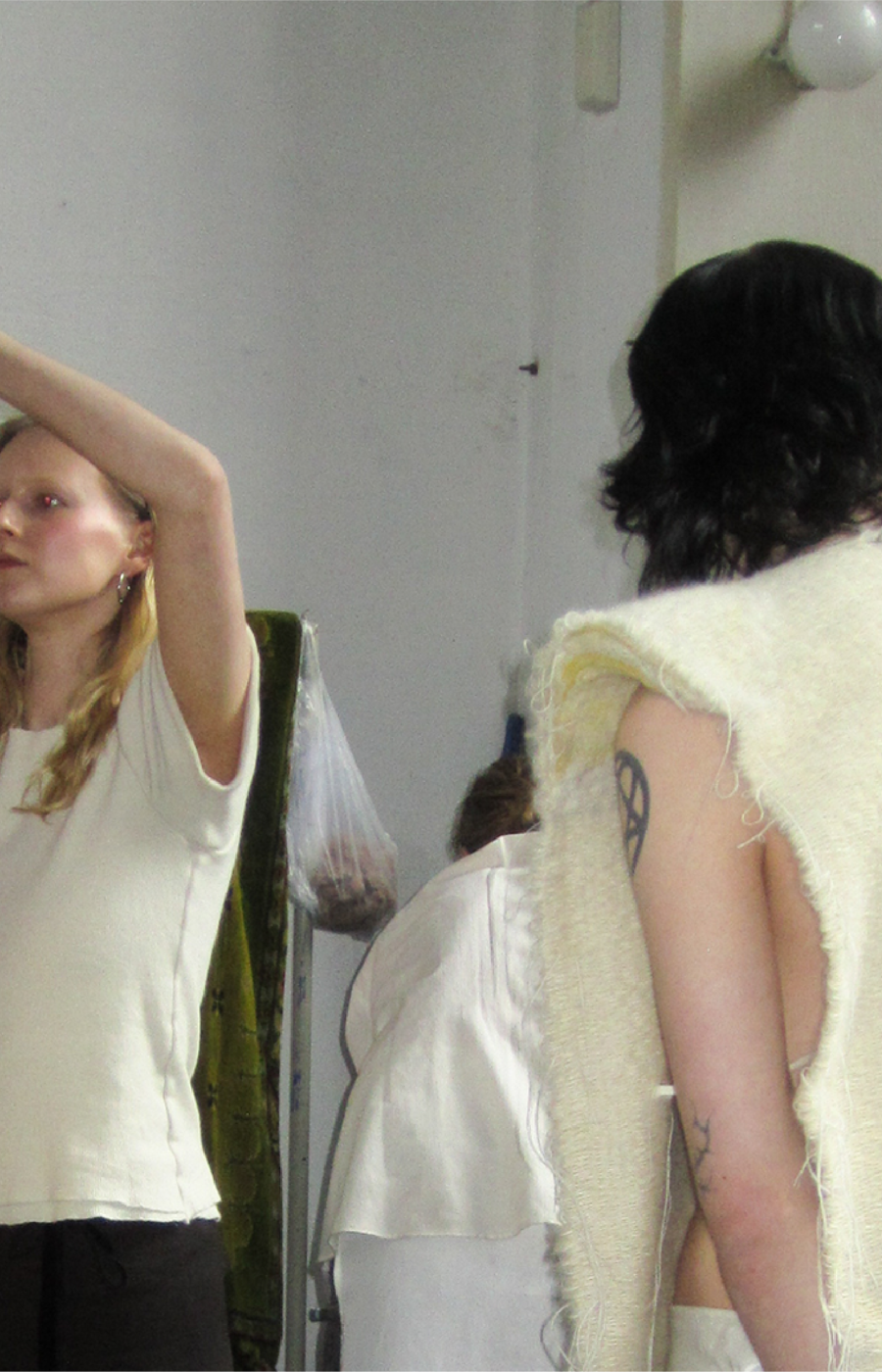
Issues of the fashion industry are widely recognised – but what could we actually do for those?

We should shift our entire mindsets about fashion production and consumption.
What kind of role fashion has in our lives? What do we value? How do we produce and what we produce?
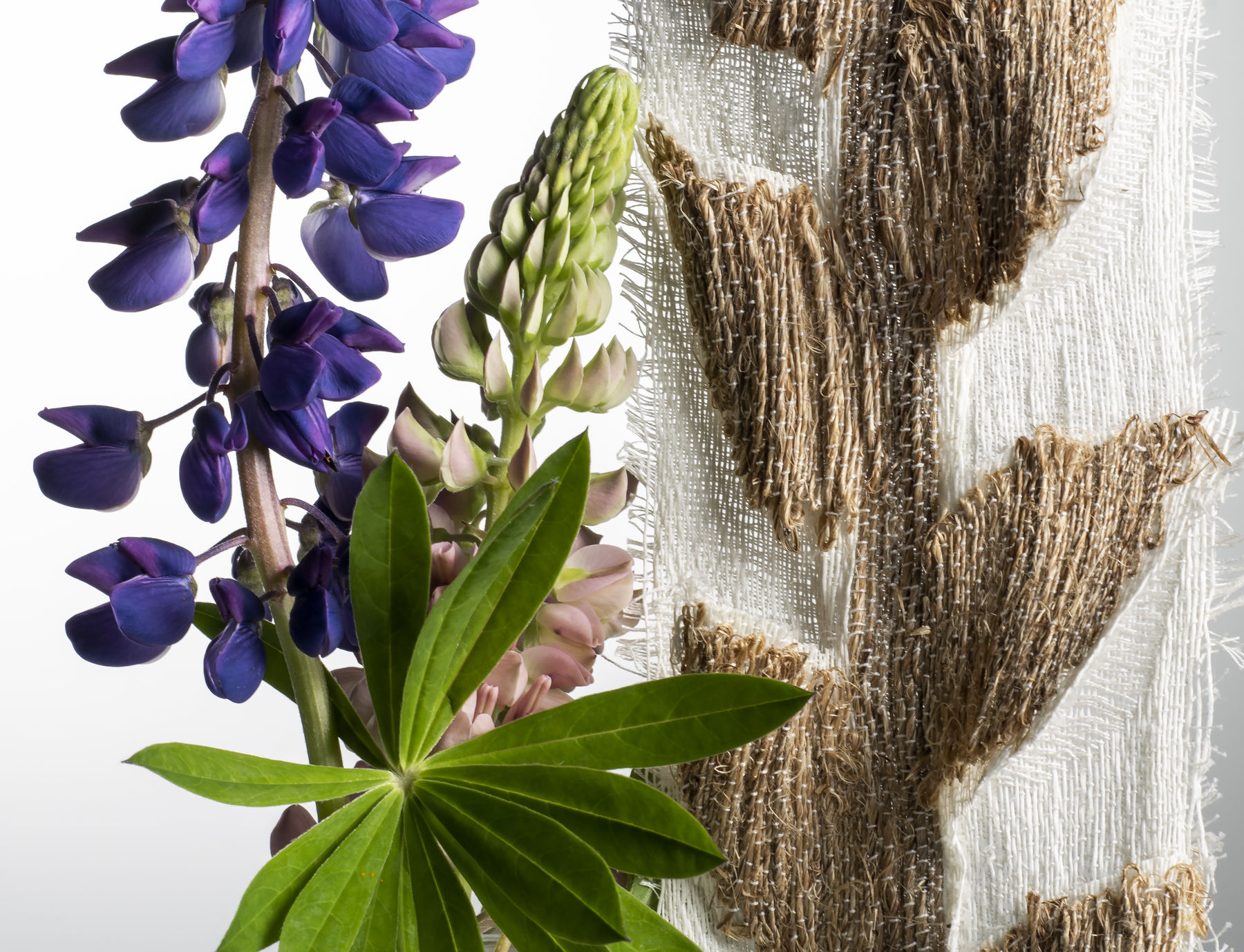
Currently, textile production relies on resources like cotton: thirsty for water, pesticides and human labour.
Solutions might be closer than we think.
We could utilise locally available, abundant plants
that grow even when we try to get rid of them.
Take lupine, for example.
It is an invasive perennial plant that spreads explosively and suffocates local species. But it can also be used to create stunning, texture-rich fibre and fabric.

Or green algae, a local species growing near the shorelines of the Baltic sea – but growing more and more because of the eutrophication.
Could we see the surrounding flora and fauna in a new light and find value and possibilities in unseen places?
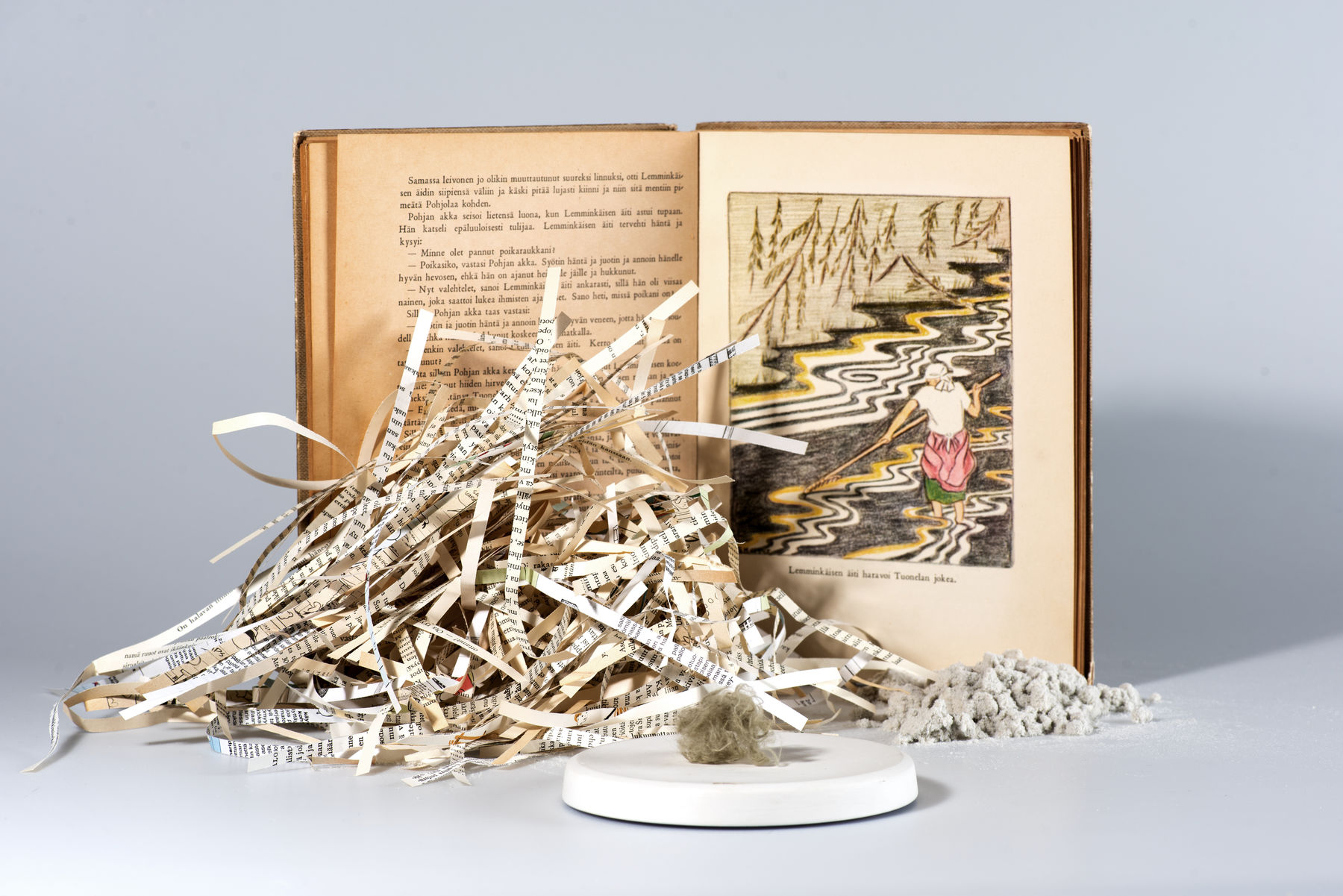
To create new, we should also utilise old, like recycled textiles – or even old books.
The variety of alternative materials is extensive, from cellulosic to lignin, oat, beans – you name it.
All of these different possibilities also highlight the natural characteristics and potential of the resources.
So in addition to looking for less harmful solutions for textile productions, the current research is also exploring the yet unseen possibilities that new materials could bring along.
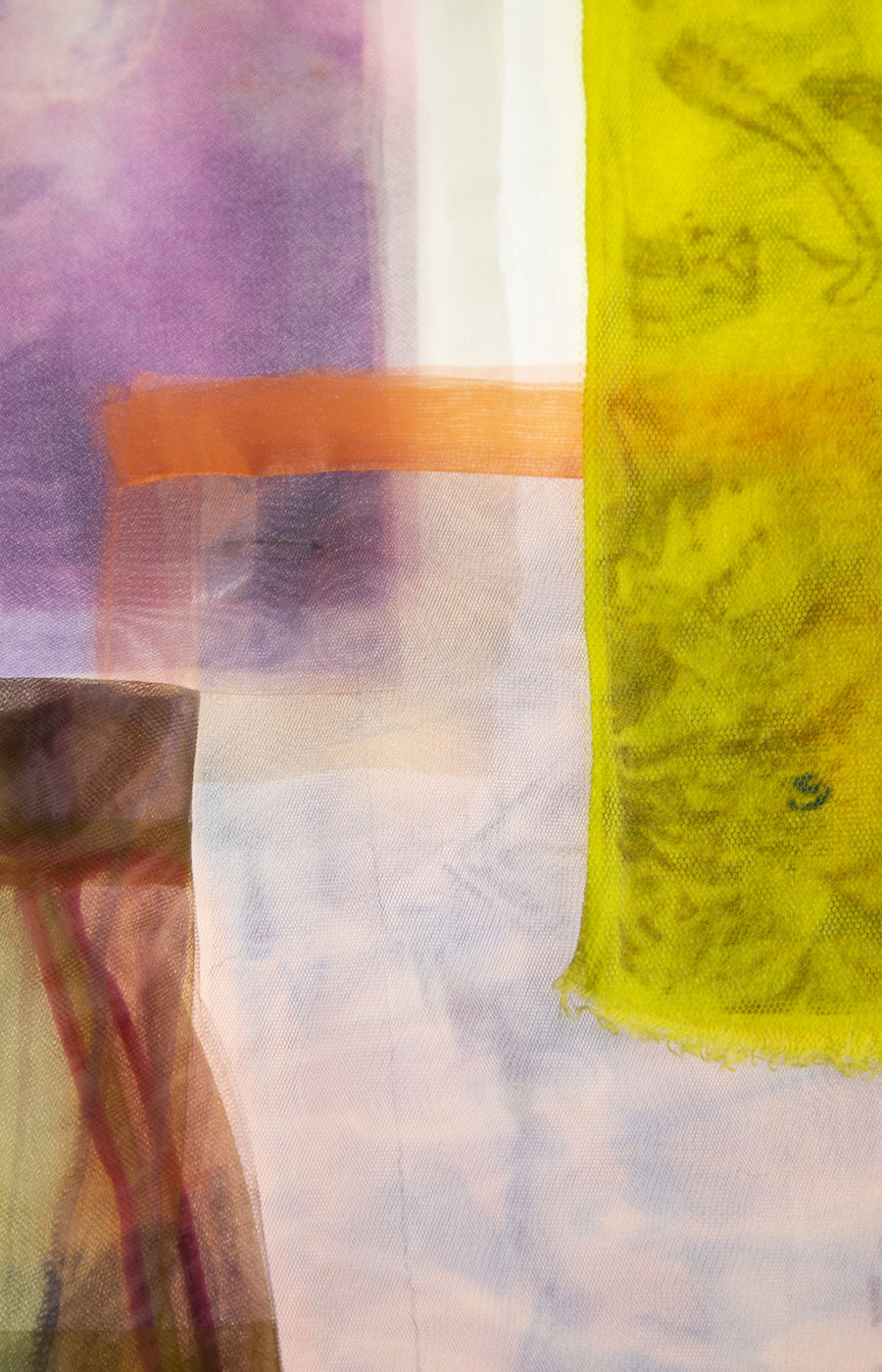
Compared to conventional printing methods,
digital textile printing uses less water, dyes and chemicals.
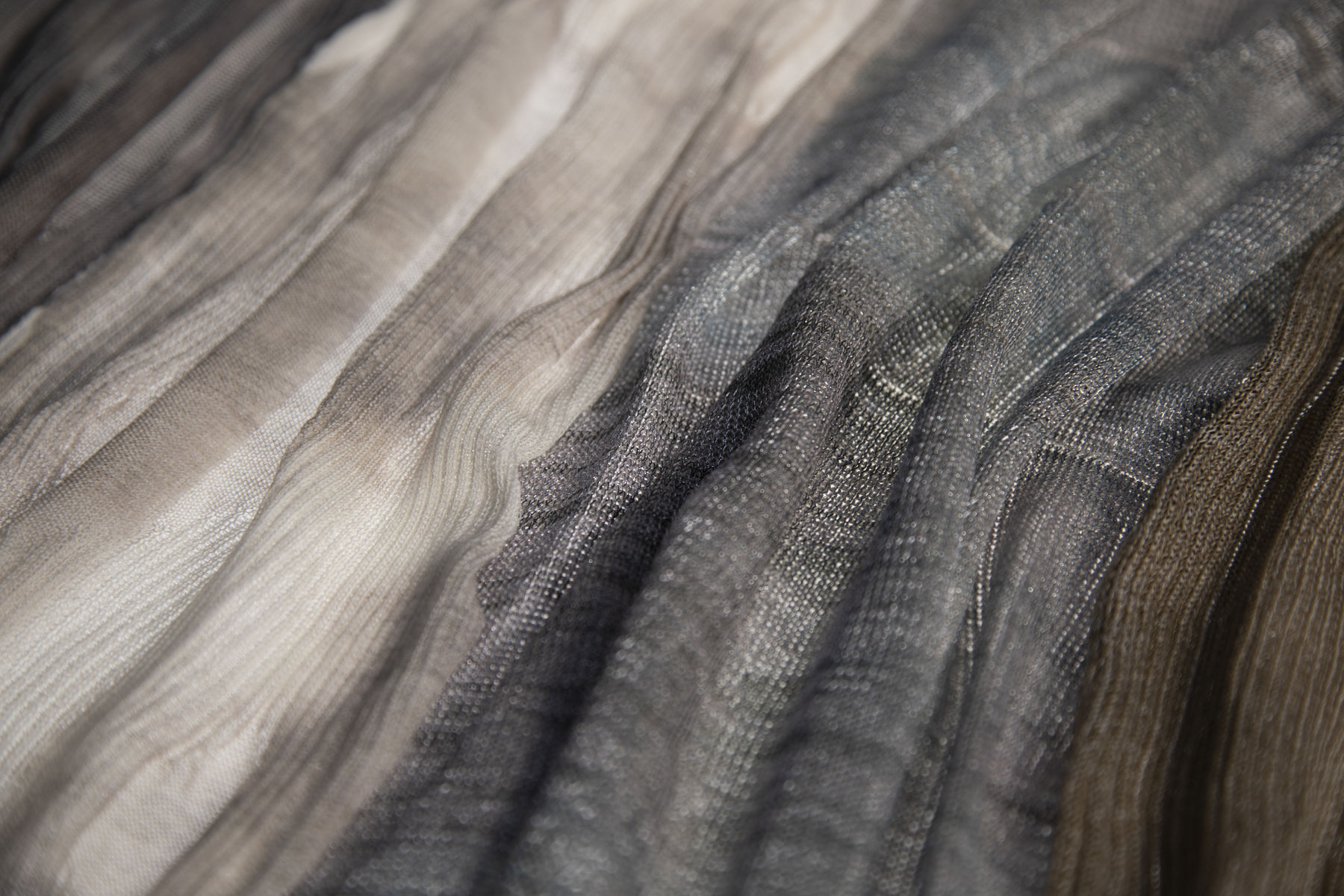
Digital textile printing can be utilised to print on recycled or upcycled materials, but that's not all.
It can also mimic the visual effects of more harmful or complex printing and manufacturing methods or excessibe yarn material use.
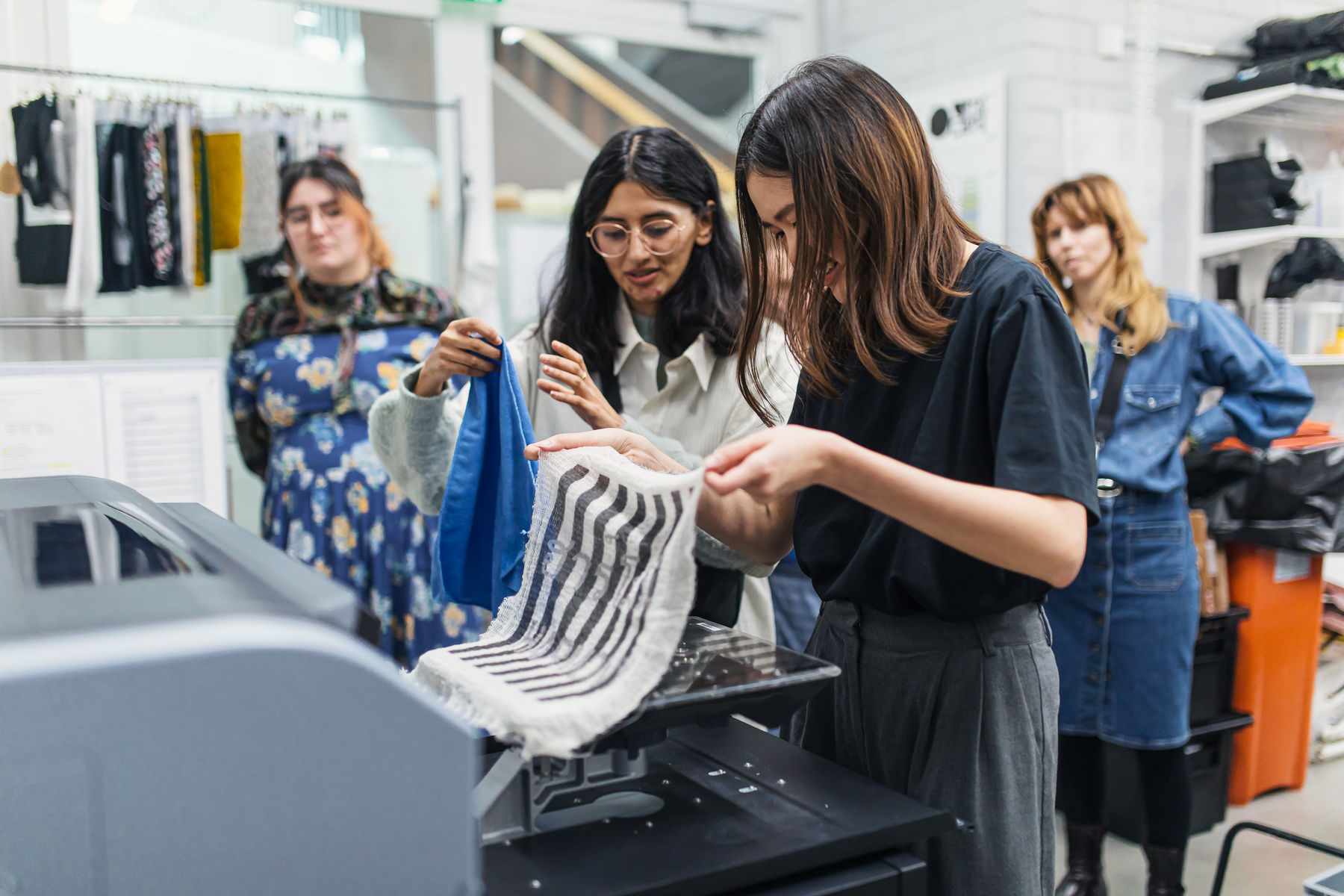
New methods almost always require new mindsets too.
We cannot expect to make a change if we don't change too.
We should respect the materials.
Instead of starting with an idea of what we want to create, we should start with material and imagine what we could create.
PROJECTS
Exploring the sustainable future of digital textile printing
Critical approaches to fashion
BACK TO THE MAIN PAGE